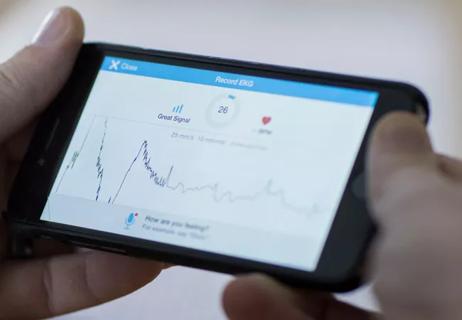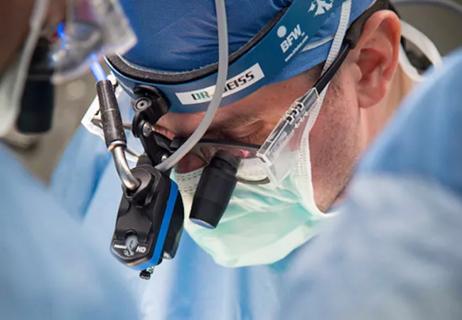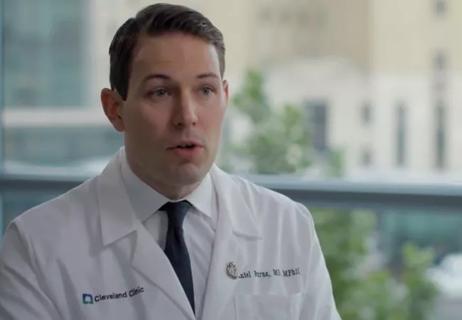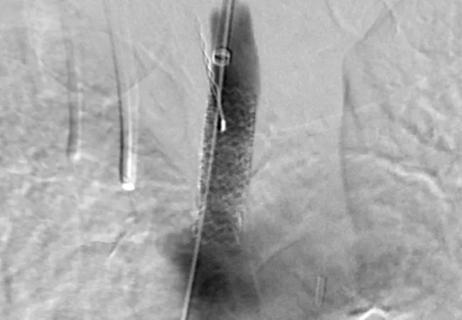How our multidisciplinary clinic models key principles from the recommendations

In cardiac amyloidosis, treatment success hinges on early diagnosis and subtype identification, yet clinicians struggle to recognize the rare condition’s subtle and diverse symptoms and know which modalities are most likely to diagnose it. Help is now at hand, however, in the form of new expert consensus recommendations for multimodality imaging in cardiac amyloidosis developed by the American Society of Nuclear Cardiology with representation from and endorsement by eight other major medical societies.
Cleveland Clinic is a non-profit academic medical center. Advertising on our site helps support our mission. We do not endorse non-Cleveland Clinic products or services. Policy
“Our goal was to increase awareness of the disease process and the different modalities available to diagnose it,” says cardiologist Mazen Hanna, MD, who served on the writing group for the recommendations and co-directs Cleveland Clinic’s Amyloidosis Center. “The ultimate goal is to diagnose patients as early as possible so as to prevent the disease from progressing and becoming advanced.”
Recognizing that most cardiologists and other relevant specialist physicians lack the experience to know the best approach for establishing a diagnosis of cardiac amyloidosis, a small community of amyloidosis experts from around the world began work on the recommendations. They drew on the limited data available on the condition and supplemented it with consensus recommendations garnered from experience. The result is a two-part document that reviews the evidence base and standardized methods of imaging in part 1 and then details diagnostic criteria and appropriate utilization in part 2. The documents were jointly published in the Journal of Nuclear Cardiology, the Journal of Cardiac Failure and Circulation: Cardiovascular Imaging.
“We aimed to illustrate how the various modalities might be used in a range of clinical situations,” says Dr. Hanna. “We think our colleagues will find it helpful.”
Cardiac amyloidosis may result when one of two proteins —immunoglobulin light chain or transthyretin — infiltrates cardiac muscle fibers, causing either the light chain (AL) or transthyretin (ATTR) form of the disease. ATTR amyloidosis may be wild-type or hereditary. “You cannot have a conversation about treatment until the type of amyloidosis is known, since the prognosis and treatment differ,” says Dr. Hanna.
Today patients with ATTR amyloidosis generally have a better outlook since there are now three FDA-approved medications for the condition. Cleveland Clinic currently has approximately 150 patients on tafamidis, the newest drug. “It is well tolerated, but we cannot say it’s curative, since no drug thus far has been fully proven to remove amyloid deposits in the organ,” Dr. Hanna explains.
AL amyloidosis is more aggressive and generally has a worse prognosis. Yet better chemotherapy agents and stem cell and/or heart transplantation are enabling patients to survive substantially longer.
“Older literature stresses that the median untreated survival is six months or less in patients with heart failure, and that is what patients and physicians still focus on,” Dr. Hanna notes. “However, because we have significantly better chemotherapy now, the prognosis for AL amyloidosis is improving, thus giving our patients enhanced survival. Survival largely depends on how early you can put a patient into remission before extensive cardiac damage occurs.”
The new consensus recommendations thoroughly discuss blood and imaging tests, including the advantages and limitations of each, and explain which tests are most likely to provide a direct route to a diagnosis. Yet the complexities of the disease in its varied forms and presentations still require the guidelines to be applied on a case-by-case basis.
“Individual differences in patients may lend to different approaches,” says Dr. Hanna. “However, the most important thing is to suspect amyloidosis and go after a diagnosis. Do not wait.”
At Cleveland Clinic, the specific blood tests and nuclear scan identified as the basic screening protocol for cardiac amyloidosis has been incorporated into an order set in the Epic electronic medical record. This enables any cardiologist to know which steps to take if amyloidosis is suspected.
Once a diagnosis has been made, patients with AL amyloidosis and any patients with ATTR amyloidosis exhibiting blood abnormalities are invited to participate in a multidisciplinary clinic that meets every Monday. The clinic is an opportunity for a patient to see a cardiologist, a hematologist/oncologist and specialized nurses all in one visit. There are also scenarios in which a nephrologist or a neurologist can be present as well.
Dr. Hanna and hematologist/oncologist Jason Valent, MD, who co-direct the clinic, review each patient’s case ahead of time and present a treatment plan for discussion. “The patient hears everything and is part of the decision-making process,” says Dr. Hanna. “This is the optimal way to serve patients who have a complex disease like this, as it optimizes communication and fosters collaboration.”
To date, Cleveland Clinic has performed five heart transplants on patients with AL amyloidosis and 16 on patients with ATTR amyloidosis. The physicians recognize that transplantation is not an ideal treatment and are looking forward to participating in clinical trials of an antibody with potential to reverse amyloid deposits in the heart.
Meanwhile, they offer to enroll patients in all clinical trials, as appropriate. “We are not satisfied with what’s available,” Dr. Hanna concludes. “Our goal is to eliminate the need for heart transplantation. Hopefully, with better drugs and combination therapy, we will ultimately be able to cure cardiac amyloidosis.”

How our first century has impacted cardiovascular practice

Review offers comprehensive assessment of the landscape for wearables and more

Preserving trust in research requires vigilance and consensus around statistical nuances

Cardiac surgeon Patrick Vargo, MD, reflects on his first year as Cleveland Clinic staff

Improved risk prediction for patients is at the heart of Dr. Aaron Weiss’ research interests

Centralization would likely bring better outcomes, experts say, but may not be feasible

Dr. Daniel Burns on mentorship, robotic valve surgery, statistics and more

JACC review makes the case and outlines how to ensure oversight